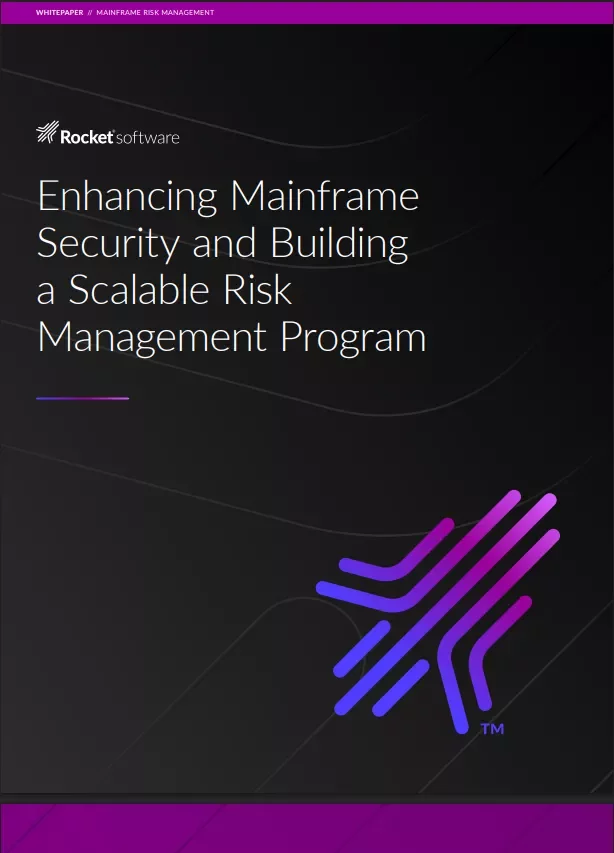Is Your Risk Management Strategy Truly Comprehensive? Secure Your Mainframe to Eliminate Vulnerabilities
In mainframe security, there's no room for complacency. Yet, many organizations unknowingly expose their critical systems by relying on outdated security measures or assuming their mainframes are inherently secure. Neglecting a proactive risk management strategy is like gambling with your organization’s most valuable data. To stay ahead of threats and ensure compliance, enterprises must adopt a scalable, structured approach to mainframe security and risk management.
91%
of mainframe organizations have experienced data breaches or security compromises in the past five years…
28%
…but only 28% of IT leaders are extremely confident in their response to mainframe vulnerabilities
Source: Rocket Software whitepaper “Enhancing Mainframe Security and Building a Scalable Risk Management Program”
The unique security challenges of mainframes
While mainframes are known for their reliability and security, they are not immune to vulnerabilities. Many organizations assume that traditional perimeter defenses are enough to protect their systems, but evolving threats demand a more comprehensive approach.
Key security challenges include:
- Evolving cyber threats: Attackers are increasingly targeting mainframes due to the wealth of sensitive information they contain.
- Regulatory compliance: Organizations must navigate complex security regulations, including DORA, PCI DSS 4.0, NIST Guidelines, NIS2, and GDPR.
- Operational complexity: Legacy security practices often lead to inconsistencies in access control, authentication, and encryption policies.
Building a scalable risk management program
A well-structured risk management program allows organizations to continuously assess, mitigate, and monitor security risks.
Key components include:
- Risk assessment: Identify critical assets and assess potential threats and vulnerabilities. This includes reviewing user access controls, network security configurations, and application vulnerabilities.
- Automated security monitoring: Deploy real-time monitoring solutions to detect unauthorized access, policy violations, and potential breaches before they escalate.
- Access control and authentication: Enforce strict identity and access management (IAM) policies to limit exposure to unauthorized users. Implement multi-factor authentication (MFA) and privileged access management (PAM) to reduce risks.
- Encryption and data protection: Ensure that all sensitive data, both in transit and at rest, is encrypted using modern cryptographic standards.
- Incident response and remediation: Establish clear protocols for responding to security incidents, including rapid containment, forensic analysis, and remediation strategies.
Don’t gamble with your security—take a proactive approach to risk management
A scalable risk management program is essential for maintaining mainframe security as cyber threats evolve and compliance standards tighten. By proactively addressing risks through continuous assessments, automated monitoring, and robust access controls, you can protect your most valuable assets and avoid costly security failures.
Don’t take chances with your risk management. Download the whitepaper, “Enhancing Mainframe Security and Building a Scalable Risk Management Program,” to explore best practices and expert strategies for building a strong mainframe security strategy.
Related posts
Mastering Mainframe Vulnerability Management
Mainframes house decades of sensitive business transactions and customer data, which makes them a prime target for cybercriminals.
Mainframe Passwords Are a Security Liability. Here's a Fix.
Your mainframe security is only as strong as your weakest link—and static passwords are a hacker’s dream.
Green Screens Are Under Attack. Fortify Your Mainframe Security.
Cyberattacks are surging, with AI-powered fraud, insider threats, and stolen credentials making green screen access a prime target.
